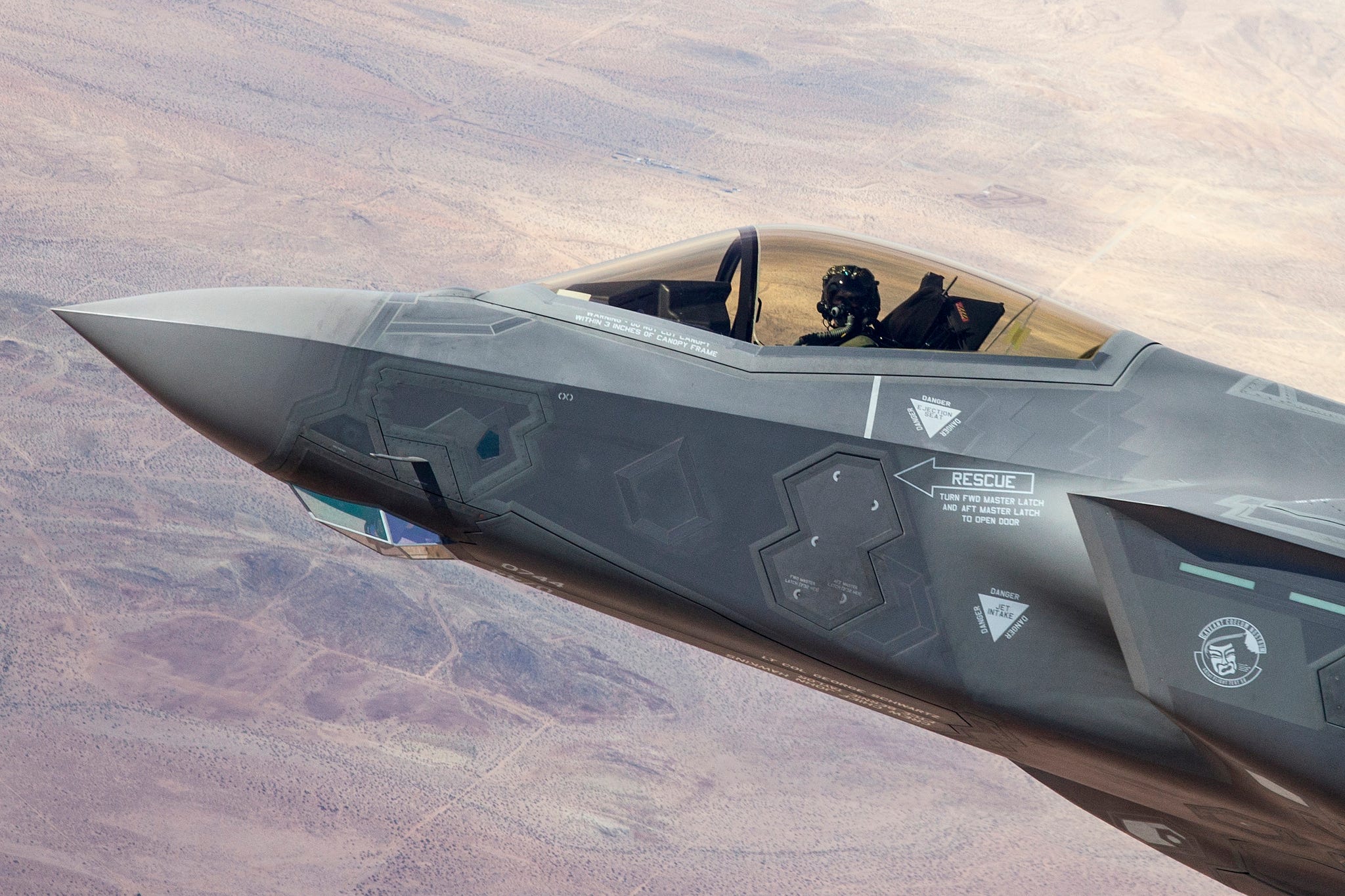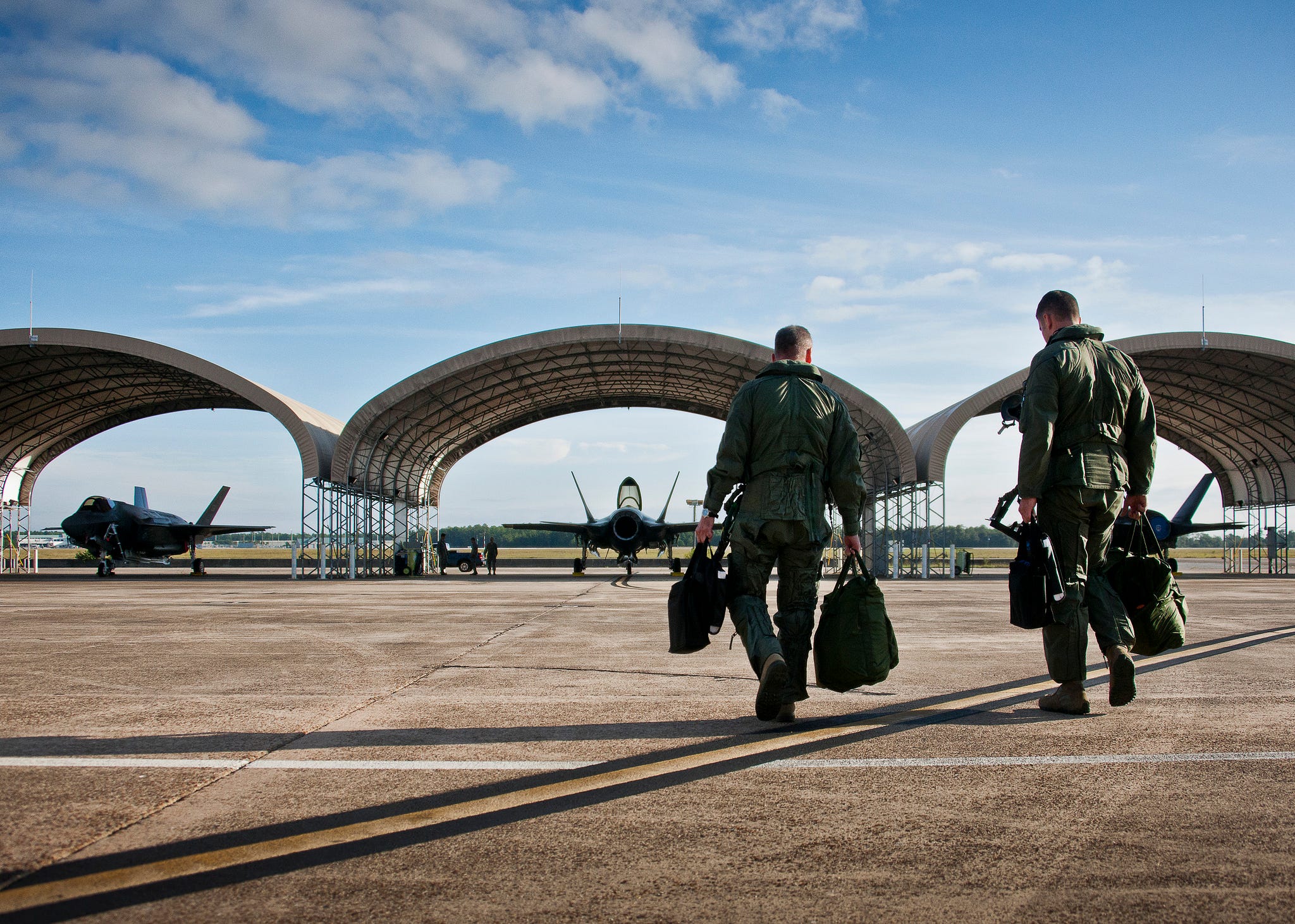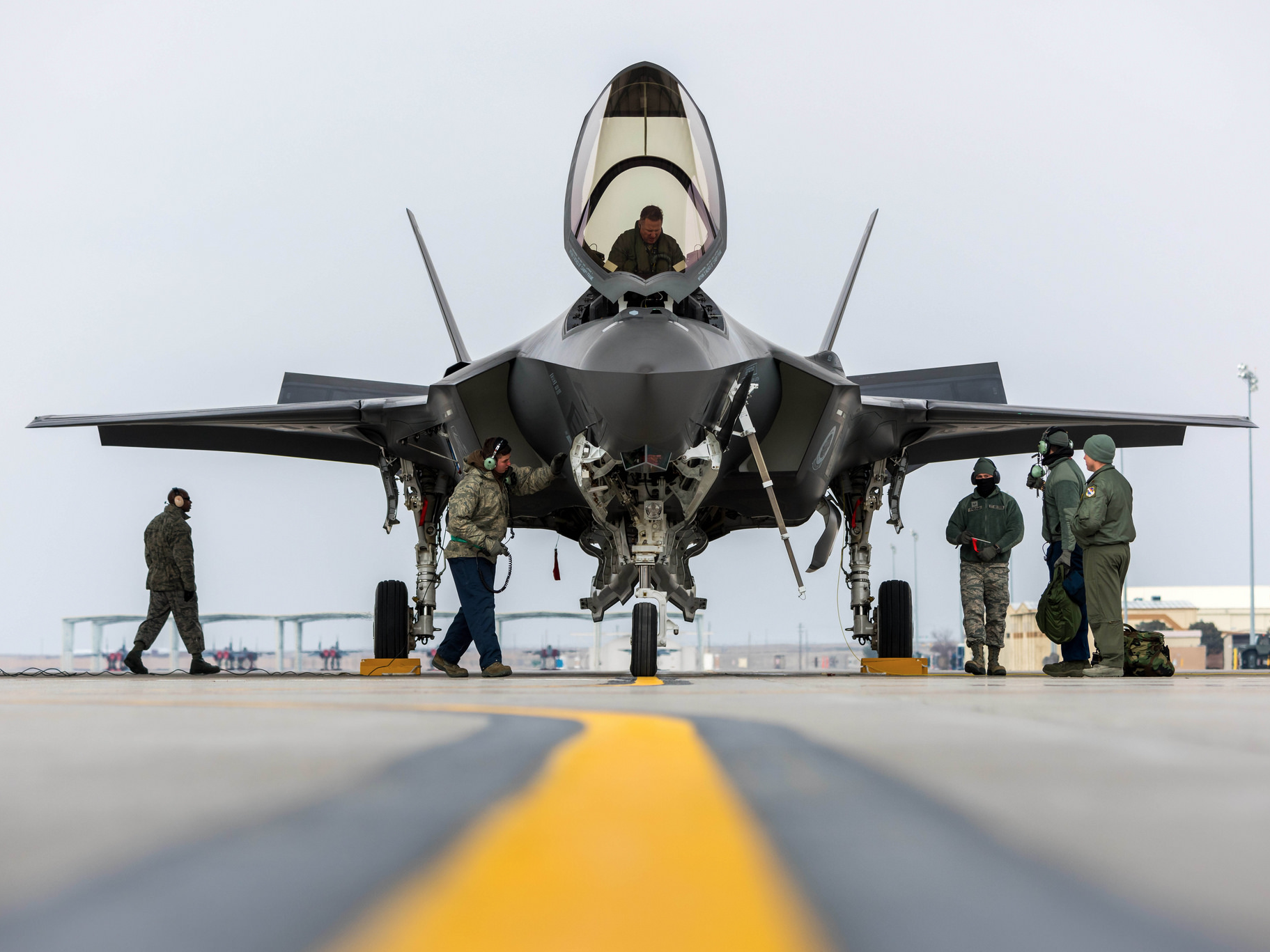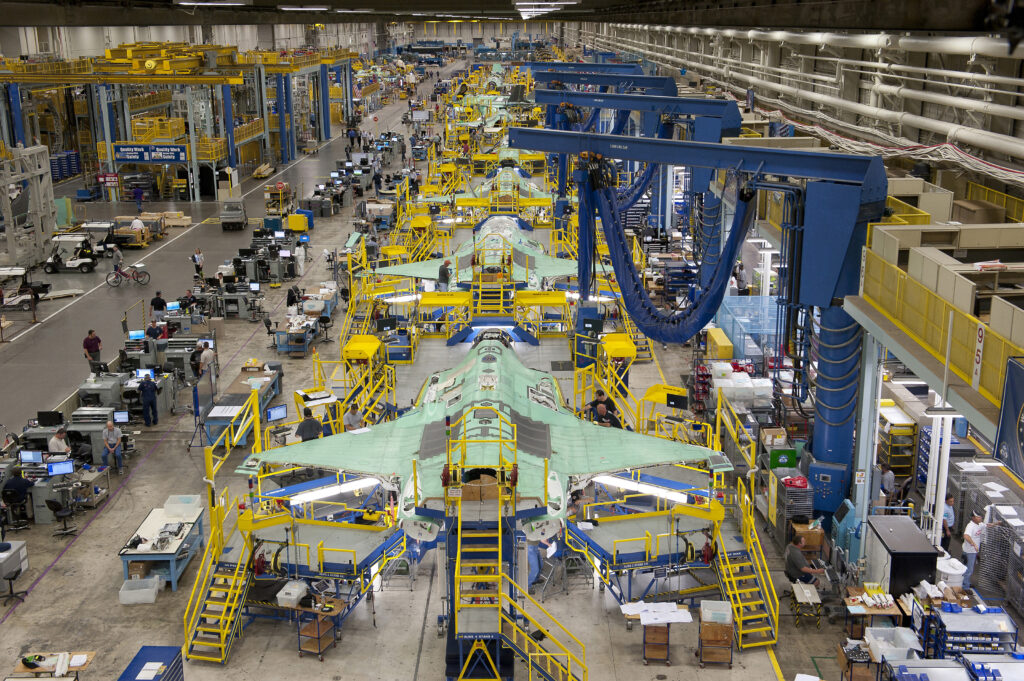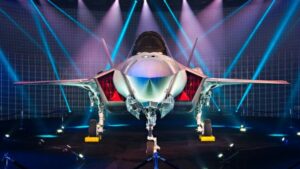We spent a day with the people who fly and fix the F-35 — here's what they have to say about the most expensive weapons project in history
JOINT BASE ANDREWS, Maryland — In a nondescript US military hangar, steps away from Air Force One, sits America's
priciest weapons system.
"The F-35 is a needed aircraft to get us to where we need to be for the future of warfare," said US Air Force Maj. Will "D-Rail" Andreotta, the commander of the F-35A Lightning II Heritage Flight Team.
"What it's giving to the pilots is everything I'm seeing on my screens added to that the helmet, the situational awareness, and the advanced avionics that we have on the aircraft is gonna allow us to fight wars in places that we have very limited capabilities in right now," Andreotta told Business Insider.
Maj. Gen. Jay Silveria, a US Air Force Warfare Center commander, walking to an F-35A Lightning II with Lt. Col. Matt Renbarger, a 58th Fighter Squadron commander, before his final qualification flight at Eglin Air Force Base.
US Air Force photo
In August, US Air Force Gen. Herbert "Hawk" Carlisle, the commander of Air Combat Command,
declared initial combat capability of 15 Air Force F-35A jets — a significant breakthrough for the weapons program, which has been
set back by design flaws, cost overruns, and technical challenges.
"When you look at where the Air Force is headed, you look at coalition warfare and spend time in the Pacific, what this means to the interoperability, the ability to operate with others in the battle space and create the coalition warfare that we will always, always, fight with in the future, the centerpiece of that is gonna be the F-35," Carlisle said at the Air Force Association's
annual Air, Space & Cyber conference.
"The integration, the interoperability, the fusion warfare that this here plane brings to the fight ... it changes the game."
An F-35A conventional takeoff and landing aircraft flying with its afterburner over Edwards Air Force Base on a night mission in 2013.
Courtesy of Lockheed Martin
The fifth-generation "jack of all trades" jet was developed in 2001 by Lockheed Martin to replace the aging aircraft in the Navy, Marine Corps, and Air Force.
The fighter is equipped with radar-evading stealth, supersonic speed, and "the most powerful and comprehensive integrated sensor package of any fighter aircraft in history," Jeff Babione, the head of Lockheed Martin's F-35 program, said in a statement.
And for an enemy to engage an F-35 would be like jumping into a boxing ring to "
fight an invisible Muhammad Ali," as Gen. Tod Wolters, the commander of US Air Forces in Europe, told Business Insider.
In short, the F-35 gives pilots the ability to see but not be seen.
An F-35B from Marine Fighter Attack Training Squadron 501 near its base in Beaufort, South Carolina.Lockheed Martin
What's more, Andreotta added, the F-35A is easy to fly.
"The F-35 is a very, very easy airplane to fly — that kinda sounds funny, but it really is ... Things that were difficult and time-consuming and task-saturating in an F-16 have now become easy," said Andreotta, a pilot in the 56th Fighter Wing at Luke Air Force Base in Arizona who has 1,600 hours in an F-16.
"I can take information that I'm getting from the F-35 and push it out to other aircraft that don't have the capabilities that I have. That's huge. I would have killed for that when I was flying an F-16."
Maj. Justin Robinson flying the 56th Operations Group flagship F-16 Fighting Falcon, escorting the first F-35 Lightning II to Luke Air Force Base in Arizona in 2014.US Air Force photo
Unlike any other fielded fighter jet, the F-35 can share what it sees in the battle space with counterparts, which creates a "family of systems."
"Fifth-generation technology, it's no longer about a platform. It's about a family of systems, and it's about a network, and that's what gives us an asymmetric advantage," Gen. David Goldfein, the Air Force chief of staff,
said during a Pentagon briefing.
Elaborating on the advantages, US Air Force Brig. Gen. Scott Pleus, the director of the F-35 integration office, said the aircraft was "
one our adversaries should fear."
"In terms of lethality and survivability, the aircraft is absolutely head and shoulders above our legacy fleet of fighters currently fielded," said Pleus, an F-35A pilot and former command pilot with more than 2,300 flying hours.
An F-35A performing a test flight on March 28, 2013.
Courtesy of Lockheed Martin
Alongside Andreotta, US Air Force TSgt Robert James, also of the F-35A Lightning II Heritage Flight Team and a pilot in the 56th Fighter Wing at Luke Air Force Base, offered some insight as a crew chief.
"Aircraft maintenance is aircraft maintenance, but with the F-35 there is an ease in maintenance," James told Business Insider.
"What they did with the F-35, I feel, and again I do this every day, is that they thought about the maintainer as well as the pilot. They designed the aircraft in a way that the maintainer could do their job better," James said.
An F-35A Lightning II team parking the jet for the first time at Mountain Home Air Force Base in Idaho on February 8.
US Air Force photo
And while the F-35 has become one of the most challenged programs in the history of the Department of Defense, US Air Force Lt. Gen. Christopher Bogdan, F-35A Joint Strike Fighter Program executive officer, said "the program itself is making progress."
"Any development program is going to encounter issues," Bogdan said. "If you're building a development program and you don't find anything wrong, then you didn't do a good enough job building that program."
US Air Force Maj. Will "D-Rail" Andreotta and US Air Force TSgt. Robert James in front of an F-35A at Joint Base Andrews on Thursday.Amanda Macias/Business Insider
He added: "So it's not a surprise to me that on any given day that we encounter things wrong with this airplane. Now is the time to find those things and fix them. The perfect example is our insulation problem we have right now.
"The mark of a good program is not that you don't have any problems but that you find things early. You fix them. You make the airplane better, the weapons system better, and you move on."



 good decision, it best to just ignore him like Gambit did, no point trying to teach him anything, he is not willing to learn at all, and he doesn't have a knowledge base on the matter so anything you try to teach him will only sounds like alien language
good decision, it best to just ignore him like Gambit did, no point trying to teach him anything, he is not willing to learn at all, and he doesn't have a knowledge base on the matter so anything you try to teach him will only sounds like alien language  )
) true, we should turn back to topic, this has gone to far to dream land
true, we should turn back to topic, this has gone to far to dream land











 !!
!!


